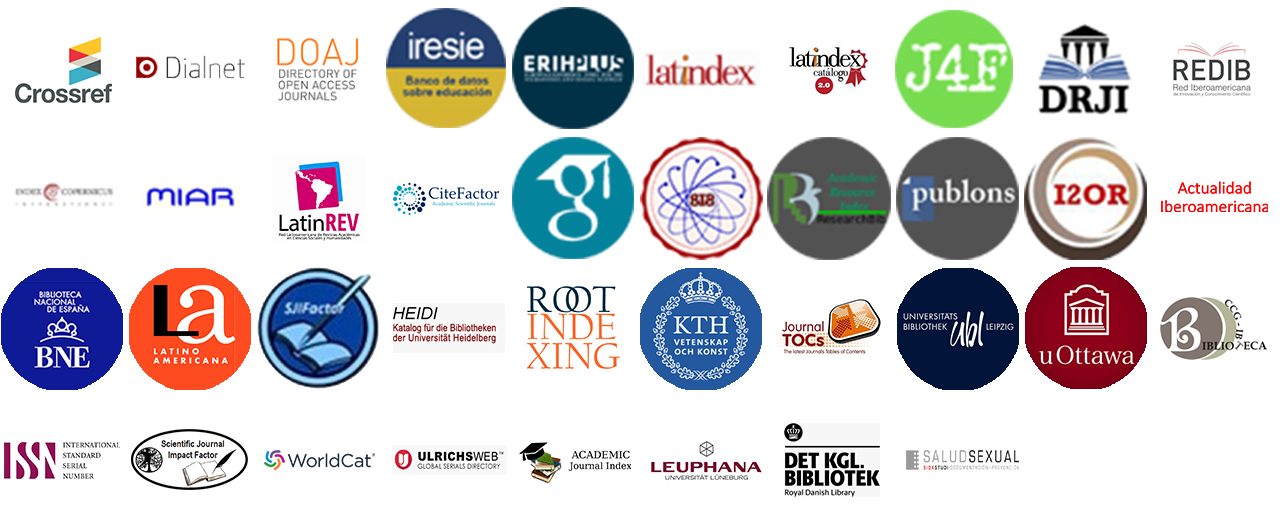UHF multifunctional fractal microstrip antenna based on the Sierpinski carpet
DOI:
https://doi.org/10.36825/RITI.09.17.002Abstract
The use of multifunctional devices increases day by day. Mentioned devices, as smart tv, need appropriate and unified antennas which can meet required frequencies. Therefore, in this paper, a Sierpinski carpet microstrip fractal antenna in the second iteration is designed and fabricated for Digital Tv in UHF band and wireless wideband networks. It was verified that that the design of a fractal antenna based on the Sierpinski carpet is possible from a rectangular patch on iteration 0; however, it must be taken into account that the patch design must be carried out at a specific resonance frequency. Simulation is carried out using ADS simulator, and it was verified using a vector network analyzer. The proposed fractal antenna operates in the UHF digital TV range from 470 MHz to 683 MHz and in the 2.45 GHz to 2.4835 GHz range of broadband wireless local area network.
References
Suvarna, S., Saneesh, V. (2017). Design and Development of Sierpinski Carpet Microstrip Fractal Antenna for Multiband Applications. International Journal of Advanced Research in Computer and Communication Engineering, 6 (4), 50-57.
Sudhina, H. K., Jagadeesha, S., Shetti, N. M. (2015). Sierpinski carpet fractal microstrip antenna for improved bandwidth using stacking technique with stripline feeding. International Journal of Latest Trends in Engineering and Technology (IJLTET), 5 (1), 171-177.
Ranjan Jena, M., Mangaraj, B. B., Mishra, D. (2013). Bandwidth and gain enhancement of multiband fractal antenna based on the Sierpinski carpet geometry. ICTACT Journal on Communication Technology, 4 (1), 669-674.
Lal, M. (2016). Design of Sierpinski Carpet Fractal Antenna with Inset Microstrip Line Feeding. International Journal of Advanced Research in Electrical, Electronics and Instrumentation Engineering, 5 (7), 6119-6125.
Peitgen, H., Jürgens, H., Saupe, D. (2004). Chaos and Fractals (2nd Ed.). New York: Springer Science.
Puente-Baliarda, C., Romeu, J., Pous, R., Cardama, A. (1998). On the behavior of the Sierpinski multiband fractal antenna. IEEE Transactions on Antennas and Propagation, 46 (4), 517-524.
Mandelbrot, B. (1983). The fractal geometry of nature. New York: WH freeman.
Srivatsun, G., Subha, S., Saisundara, G. (2011). A Self-Similar Fractal Cantor Antenna for MICS Band Wireless Applications. Wireless Engineering and Technology, 2, 107-111.
Maharana, M. S., Mishra, G. P., Mangaraj, B. B. (2017). Design and simulation of a Sierpinski carpet fractal antenna for 5G commercial applications. Trabajo presentando en International Conference on Wireless Communications, Signal Processing and Networking (WiSPNET), Chennai.
Romeu, J., Soler, J. (2001). Generalized Sierpinski fractal multiband antenna. IEEE Transactions on Antennas and Propagation, 49 (8), 1237-1239.
Lupera Morillo, P., Flores Cadena, G., Merizalde Merizalde, R. (2019). Design and Testing of Fractal Antenna Parameters based on the Koch Curve for Reception of Digital Terrestrial Television Signals in the UHF Band. Law, State and Telecommunications Review, 11 (1), 159-172.
Huang, Y., Boyle, K. (2008). Antennas: from theory to practice (1rst Ed.). Chichester, UK: John Wiley & Sons.
Balanis, C. A. (2008). Modern antenna handbook (1rst Ed.). New Yersey: John Wiley & Sons.
Arcotel. (2015). Norma Técnica para el Servicio de Radiodifusión Televisión Analógica, Ecuador. Recuperado de: https://www.arcotel.gob.ec/wp-content/uploads/2016/03/norma-tecnica-television-analogica.pdf
Unión Internacional de Telecomunicaciones UIT-R. (2014). M.1450-5, Características de las redes radioeléctricas de área local de banda ancha. Recuperado de: https://www.itu.int/rec/R-REC-M.1450/es
Medina Monroy, J. L., Díaz Tapia, E., Olvera Cervantes, J. L., Chávez-Pérez, R. A., Velázquez-Ventura, A. (2008). Análisis y Comparación de Metodologías para Determinar Experimentalmente la Ganancia de Antenas de RF y Microondas. Trabajo presentado en Simposio de Metrología, Santiago de Querétaro, México. Recuperado de: https://www.cenam.mx/simposio2008/sm_2008/memorias/M1/SM2008-M127-1150.pdf
Published
How to Cite
Issue
Section
License
Copyright (c) 2021 Revista de Investigación en Tecnologías de la Información

This work is licensed under a Creative Commons Attribution-NonCommercial-NoDerivatives 4.0 International License.
Esta revista proporciona un acceso abierto a su contenido, basado en el principio de que ofrecer al público un acceso libre a las investigaciones ayuda a un mayor intercambio global del conocimiento.
El texto publicado en la Revista de Investigación en Tecnologías de la Información (RITI) se distribuye bajo la licencia Creative Commons (CC BY-NC
 ), que permite a terceros utilizar lo publicado citando a los autores del trabajo y a RITI, pero sin hacer uso del material con propósitos comerciales.
), que permite a terceros utilizar lo publicado citando a los autores del trabajo y a RITI, pero sin hacer uso del material con propósitos comerciales.



